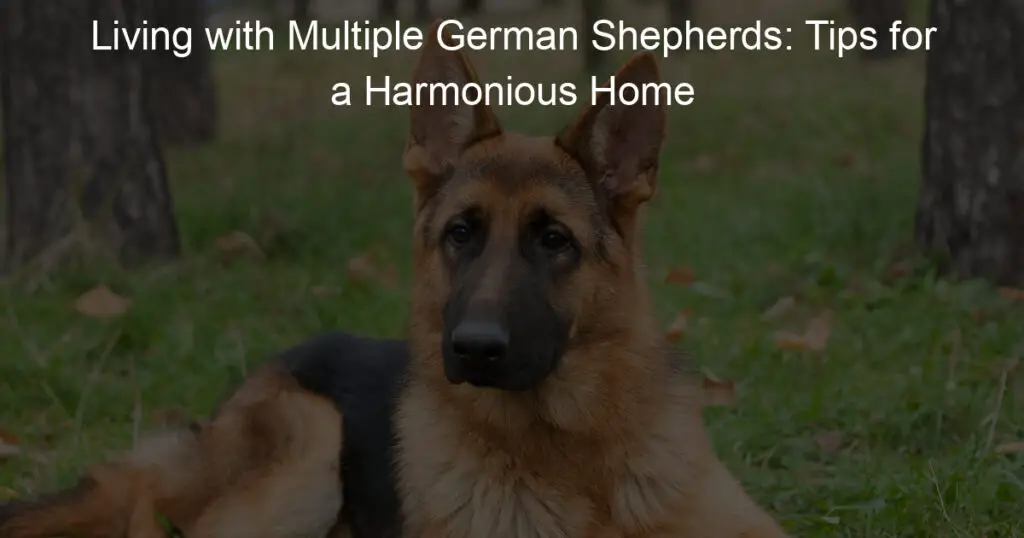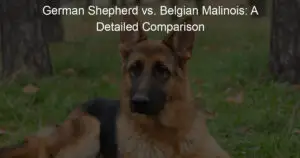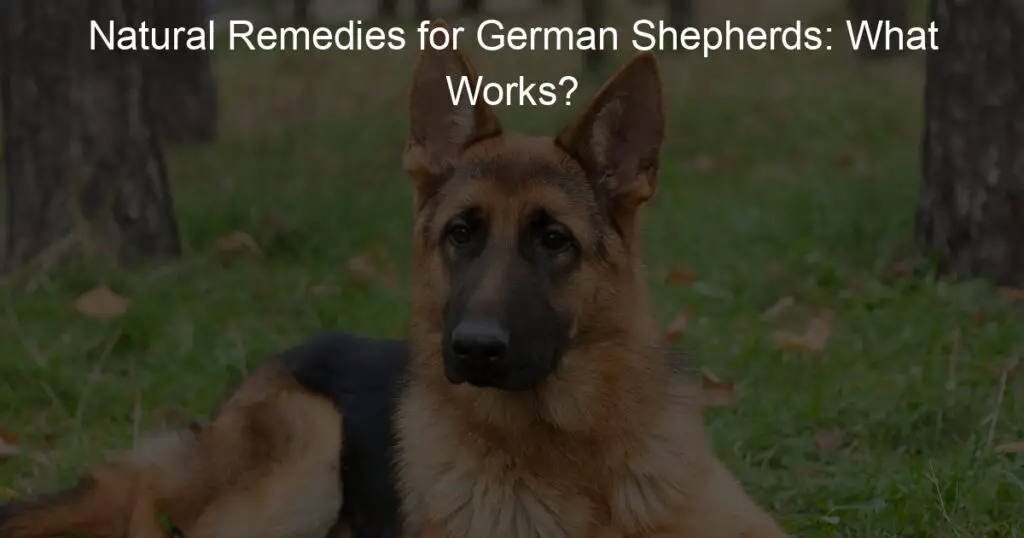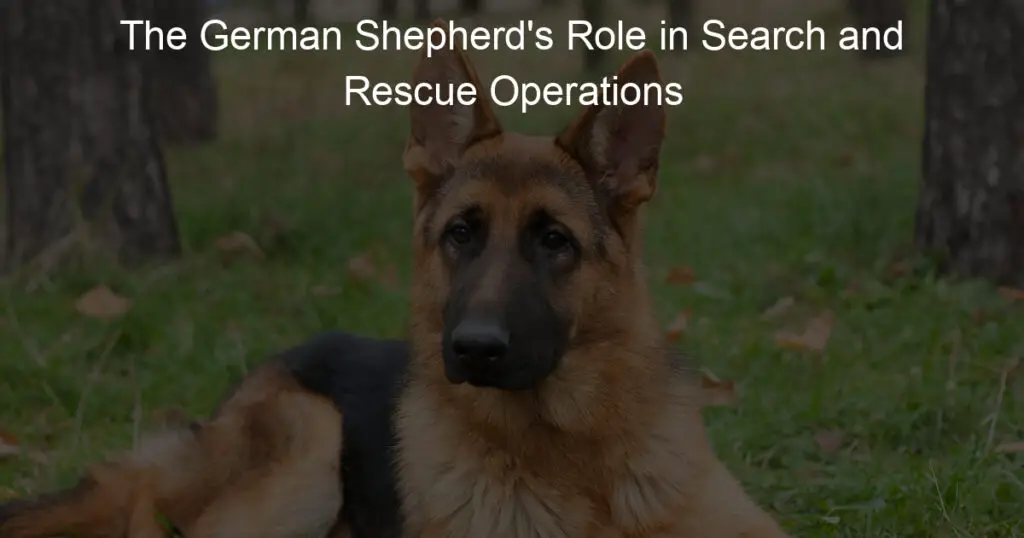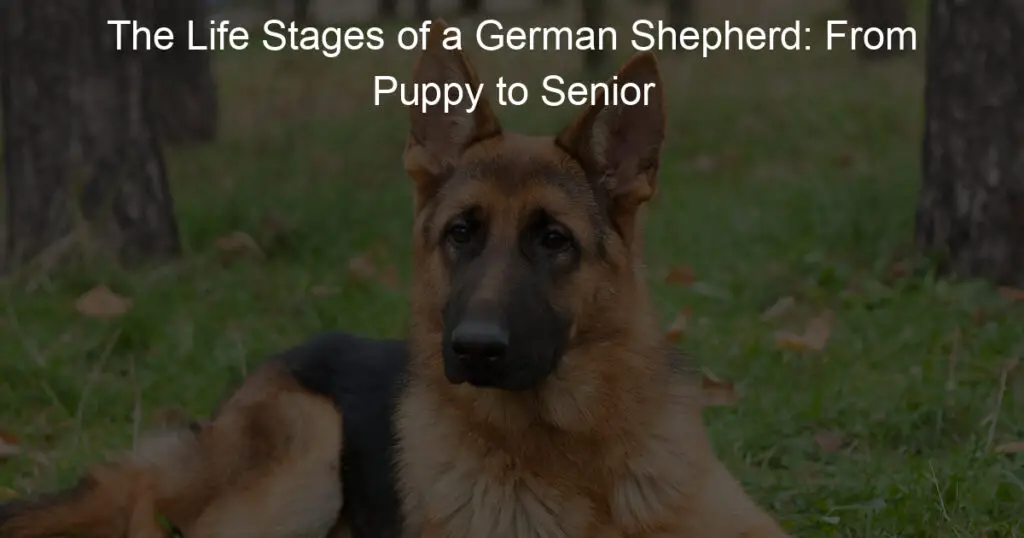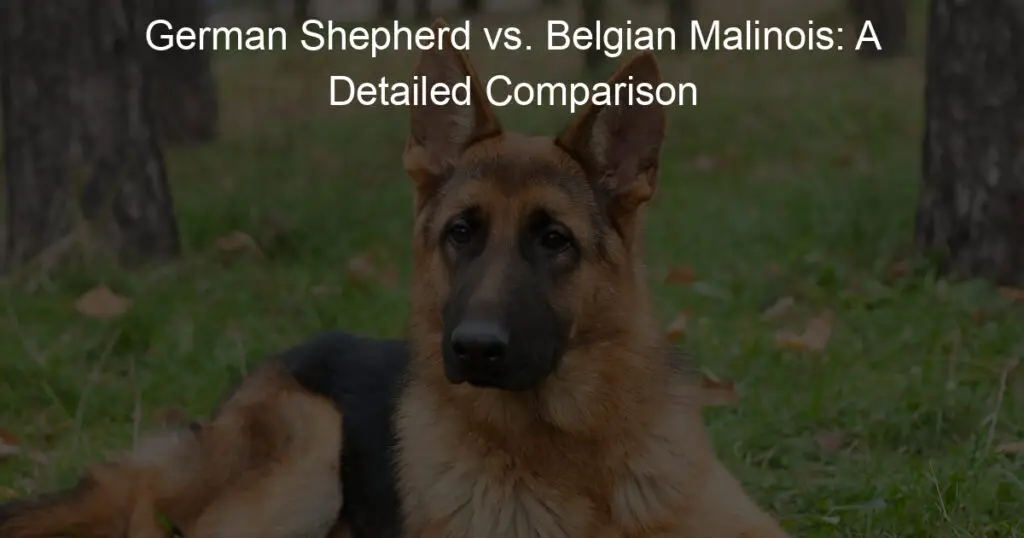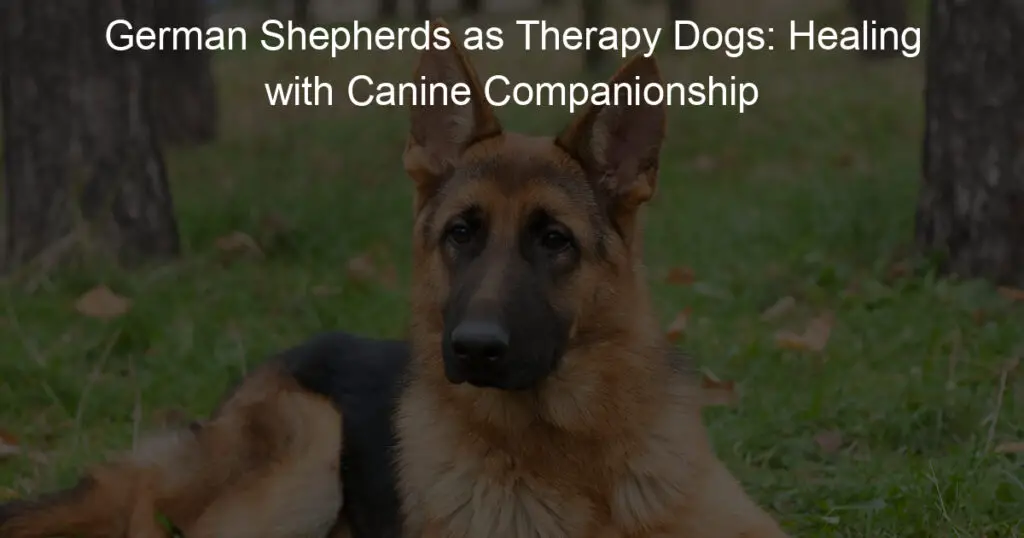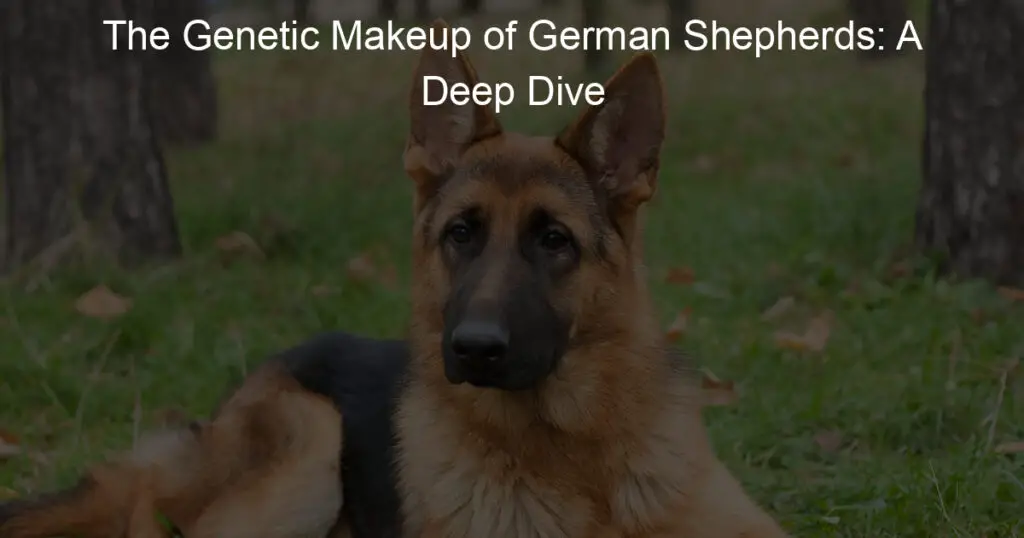Living with multiple German Shepherds can be both a challenging and rewarding experience.
As a breed, German Shepherds are intelligent, loyal, and protective, making them wonderful companions and service dogs.
However, managing the unique needs and personalities of multiple German Shepherds requires dedication, understanding, and proper training.
From the moment German Shepherd puppies become part of your family, it’s essential to establish a strong bond and provide them with proper training and guidance.
As they grow and develop, staying consistent with their training and adjusting to their different behavioral traits will help you ensure a harmonious and loving household.
Key Takeaways
- Establishing a strong bond and consistent training is crucial for managing multiple German Shepherds
- Understanding and properly addressing the unique behavioral traits of each German Shepherd is essential
- Fostering a caring, dedicated relationship with your German Shepherds leads to a harmonious and loving home
Understanding Your German Shepherd
Intelligence and Temperament
As a German Shepherd owner, I’ve come to appreciate how intelligent and loyal my dogs are. They are highly trainable, which is largely due to their intellectual capacity and innate eagerness to please their owners.
Their temperament can be described as confident, courageous, and sometimes even a bit aloof towards strangers.
Nevertheless, once they get to know someone, their loyalty and affection are unwavering.
It’s essential to understand that each German Shepherd has its personality, but in general, they are a versatile and adaptable breed that can excel in various activities, such as obedience, protection, and search and rescue.
The Importance of Early Training
When it comes to training my German Shepherds, I can’t stress enough the importance of starting early.
Since German Shepherds are intelligent and learn quickly, exposing them to appropriate training and socialization right from their puppy stage is crucial in ensuring they grow into well-behaved and obedient adults.
As a puppy, my German Shepherds were introduced to various situations and environments that would help shape their behavior positively.
For instance, I taught them basic commands like “sit,” “stay,” and “come” through positive reinforcement.
I also made sure to expose them to different people, animals, and situations so that they learn to be well-rounded and adaptable.
Remember, training a German Shepherd is not just about them learning tricks. It’s about establishing trust, building a strong bond, and ensuring they understand their place in your family dynamic.
As a result, they become a loyal, dependable, and loving companion.
Basic Training and Commands
Essential Commands
In my journey of living with multiple German Shepherds, I’ve found that teaching them basic commands is crucial. These commands help in establishing obedience and strong communication between us.
Start with simple commands like sit, come, stay, down, quiet, shake, dance, high five, kiss, and speak.
Consistency and routine are key when teaching these commands, so set aside specific times each day for training sessions.
Starting With Crate Training
Crate training is essential as it serves as a safe space for German Shepherds and assists in housebreaking. I introduced my puppies to their crates as soon as they arrived.
Start with short durations in the crate, eventually increasing the time spent inside as the puppy becomes comfortable.
Remember to never use the crate as a punishment – it should always be a positive and rewarding experience.
Housebreaking Your Puppy
German Shepherds are intelligent and highly trainable, which has made housebreaking relatively easy for me. Potty training entails setting a regular elimination schedule and taking the puppy outside after meals, playtime, and sleep.
Patience and supervision are crucial during this process. Instead of punishing accidents, simply redirect your pup to the proper elimination area.
Leash Training Basics
Teaching my German Shepherds to walk nicely on a leash has greatly improved our daily walks. Start by introducing the puppy to the collar and leash in a controlled environment, then gradually move to outdoor walks.
Use rewards and praise to reinforce good behavior (like walking without pulling) and immediately redirect any unwanted behaviors.
Remember to keep all training sessions fun and engaging for both you and your German Shepherd.
A strong bond and trust will help lay the foundation for a well-behaved and happy companion.
Advanced Training Methods
Establishing Command Recall
One of the most important advanced commands I’ve found useful when training my German Shepherds is recall. This means teaching them to come back to me whenever I call them.
To establish a strong recall, I start by choosing a unique word or phrase for the recall command and use it consistently.
I make sure to praise and reward my dogs with treats every time they successfully respond to the recall command.
Patience and consistency are key in building a reliable recall. I like to practice in a controlled environment at first, gradually increasing the level of distraction and distance.
This ensures my German Shepherds are comfortable and confident when responding to the recall command, both at home and in situations with distractions.
Impulse Control Tips
Impulse control is another critical aspect of training a German Shepherd puppy. I’ve found that teaching impulse control helps my dogs to be more patient and focused during obedience training sessions.
Here are some impulse control tips I’ve found useful:
- Start with basic obedience training: I begin by teaching basic commands like “sit” and “stay.” This lays a solid foundation for further impulse control exercises.
- Introduce distractions: As my dogs become more proficient with basic commands, I gradually introduce distractions to build up their impulse control.
- Reward patience: I always make sure to reward my German Shepherds when they display patience and control in the face of distractions.
Working with Distractions
Training a German Shepherd with distractions around can be challenging, but it’s crucial for ensuring they’re well-behaved in all settings.
I make it a point to work with my dogs in a variety of environments and situations, exposing them to different sights, sounds and smells.
When working with distractions, I follow these steps:
- Begin in a quiet, controlled environment: I first establish the command in a place free of distractions, so my dogs can focus on learning and being successful.
- Gradually introduce distractions: Once my dogs have a solid understanding of the command, I slowly introduce distractions, starting with small ones and building up to more significant challenges.
- Practice regularly: To ensure that my German Shepherds can reliably perform the command around distractions, I practice in various settings and situations consistently.
By following these advanced training methods and staying patient and consistent, I’ve seen fantastic progress in my German Shepherds’ obedience and command recall.
It has made living with multiple German Shepherds a more enjoyable and stress-free experience.
Behavioral Traits and Management
Managing Separation Anxiety
In my experience, German Shepherds are prone to separation anxiety. They form strong bonds with their humans and can become anxious when left alone for prolonged periods.
To help manage their anxiety, I have established a routine for my dogs. I also use puzzle toys and calming treats to keep them entertained and relaxed when I am away.
Further, crate training has been beneficial in providing them with a safe space and limiting destructive behaviors.
Addressing Common Behavioral Problems
Like other dogs, German Shepherds may exhibit common behavioral issues such as barking, chewing, and jumping. To manage these habits, I ensure consistent training and reinforcement.
For example, to address excessive barking, I teach them the “quiet” command and provide rewards for compliance.
Similarly, when tackling chewing and jumping, I redirect their energy to appropriate outlets like toys and exercise.
Socialization Tips
Socializing German Shepherds is crucial to prevent aggression and fear-based behaviors. I introduce my dogs to various people, animals, and environments from an early age.
Enrolling them in obedience classes and visiting dog parks are great ways to achieve this. Remember to be patient and use positive reinforcement throughout the process.
Here are some tips I follow for successful socialization:
- Gradually expose them to new experiences
- Make every interaction positive and rewarding
- Start early but continue socialization throughout their lives
Training Your Shepherd Outdoors
Outdoor training plays a vital role in a German Shepherd’s mental and physical development. When training my dogs outdoors, I focus on obedience, socialization, and environmental challenges.
I begin with basic commands like “sit,” “stay,” and “come” in a fenced area before gradually introducing distractions.
Furthermore, exposing them to various terrains and obstacles helps increase their confidence and adaptability.
Lastly, always praise and reinforce positive behaviors to encourage learning and consistency.
Building a Strong Bond
As the owner of multiple German Shepherds, I’ve discovered that building a strong bond with each of my dogs is essential for a harmonious and happy household.
One essential aspect of building this bond is establishing trust and confidence between me and my dogs, which can be achieved through game-based training and positive reinforcement techniques.
Making Training a Game
Turning training sessions into a fun game can help build the relationship between me and my dogs, as well as strengthen the alpha role.
Playing games with my German Shepherds, like fetch and treat-based activities, can be highly effective for reinforcing good behavior and learning commands.
Using a variety of toys and treats keeps things interesting and enjoyable for both of us.
During our training sessions, I like to use durable toys that can withstand my dogs’ enthusiasm and energy.
Chew toys, puzzle toys, and treat-dispensing toys are all excellent choices for these game-based activities.
I also make sure to have plenty of tasty and nutritious treats on hand, which I use as a reward for good behavior and successful skill-building.
Positive reinforcement training, or reward-based training, is an essential part of building a strong bond with my German Shepherds.
By using this approach, I reinforce my dogs’ positive behaviors with praise, treats, and toys, which help to build their trust and confidence in me.
As an added bonus, making training a fun game helps to keep both me and my dogs mentally and physically stimulated, which is incredibly important for high-energy breeds like German Shepherds.
In our training sessions and daily routine, I make sure to provide a comfortable and safe environment for my German Shepherds to learn and play.
This includes making sure that our training space is free of hazards and distractions and that we have ample time to bond and enjoy each other’s company.
By creating this nurturing environment, I’m able to foster a strong, trusting relationship with my dogs that can last a lifetime.
The Role of the German Shepherd
As a lifelong fan and owner of multiple German Shepherds, I can attest to the incredible versatility and adaptability of this breed.
German Shepherds are known for their roles as protection dogs, working dogs, and loyal family companions.
No wonder they rank second in popularity among the American Kennel Club’s registered breeds!
Protection has always been a primary function of German Shepherds. With their strong instincts, courage, and loyalty, they make excellent guardians for families and property.
It’s essential to train them in obedience and socialization from a young age to ensure they know how to protect the house without aggression.
As working dogs, German Shepherds have few equals. Their intelligence, strength, and stamina have earned them roles in police work, search and rescue, and therapy. They can be trained for various tasks, from detecting illegal substances to assisting people with disabilities.
A well-trained German Shepherd is a true asset in any working situation.
Having multiple German Shepherds in your home means they become more than just protectors and working dogs—they become cherished family companions.
They’re affectionate and great with children, and their playfulness means they’re always up for a game of fetch or a walk in the park.
While they may be protective of their family, they show a gentler side around their loved ones and will happily snuggle up on the couch.
One organization that upholds the high standards of this breed is the American Kennel Club. They emphasize responsible breeding practices and provide resources for training, grooming, and overall care.
As a German Shepherd owner, it’s essential to follow these guidelines and give them proper care, training, and socialization.
Living with multiple German Shepherds can be an immensely rewarding experience but remember that it requires dedication and effort.
By understanding and fulfilling their roles in your life, you’ll be rewarded with a lifetime of love, loyalty, and companionship.
Frequently Asked Questions
How to raise multiple German Shepherd puppies?
I recommend starting with a consistent daily routine, including feeding, playtime, and potty breaks. Establish boundaries early on by setting up separate sleep and play areas for each puppy.
Socialize them by exposing them to different people, environments, and experiences. Attend obedience classes together to help your puppies bond and learn social cues from each other.
Tips for training friendly German Shepherds?
Positive reinforcement is key when training German Shepherds. Reward good behavior with treats and praise. Socialize them early and expose them to various environments, people, and other dogs. Consistent and clear communication is essential.
Establish boundaries, set rules, and be patient. It’s also important to provide mental and physical stimulation to keep them happy and healthy.
Can German Shepherds adapt to full-time working owners?
Yes, German Shepherds can adapt to full-time working owners, but you must provide them with ample mental and physical stimulation.
Consider hiring a dog walker or using doggy daycare services. Invest in interactive toys and puzzles to keep them engaged while you’re away.
Consistent training and a stable daily routine will help them feel secure.
How to manage German Shepherds in an apartment?
Proper management of German Shepherds in an apartment includes adequate daily exercise, mental stimulation, and proper socialization.
Provide a comfortable designated space for them to rest, eat, and play. Set boundaries and obedience train them to avoid unwanted behaviors.
Lastly, be attentive to noise levels and respect your neighbors.
Which breeds are best suited for German Shepherds?
Breeds that can be good companions for German Shepherds include Golden Retrievers, Labrador Retrievers, Boxers, and other German Shepherds.
The best-suited breed would be one with a similar energy level, size, and temperament. It’s important to introduce any potential companions properly and to monitor their interactions closely.
How much daily interaction is needed for multiple German Shepherds?
Multiple German Shepherds require a significant amount of daily interaction, both individually and as a group. Aim for at least 1-2 hours of focused activity, such as exercise, play, or training, each day.
Furthermore, provides mental stimulation in the form of toys and puzzles. Remember to give each dog their own personal time with you to reinforce your bond.

